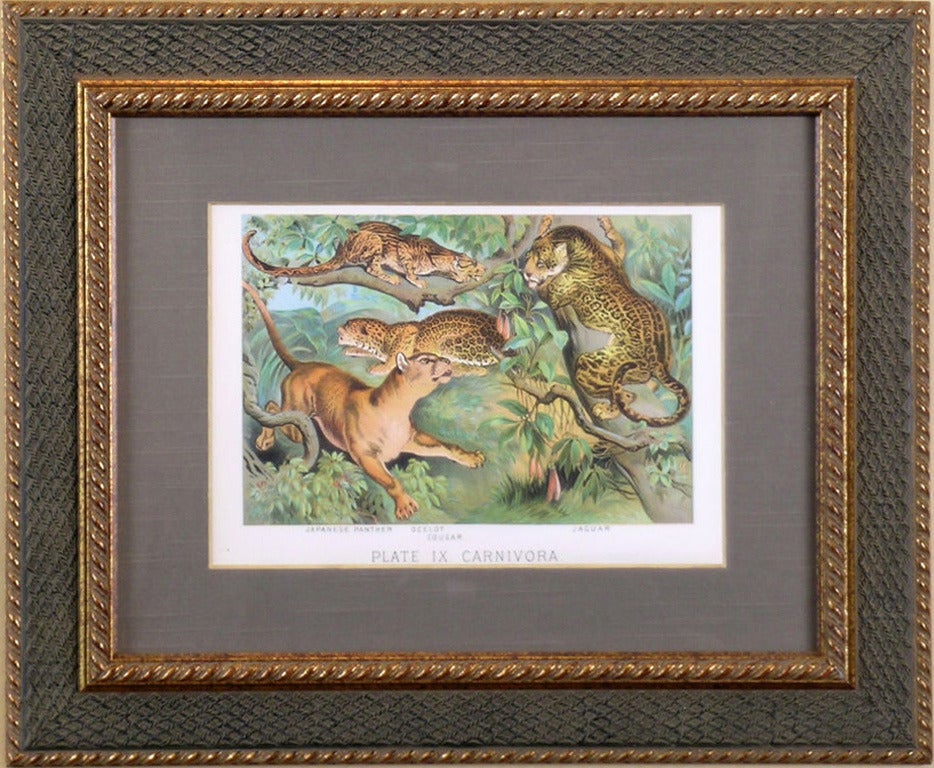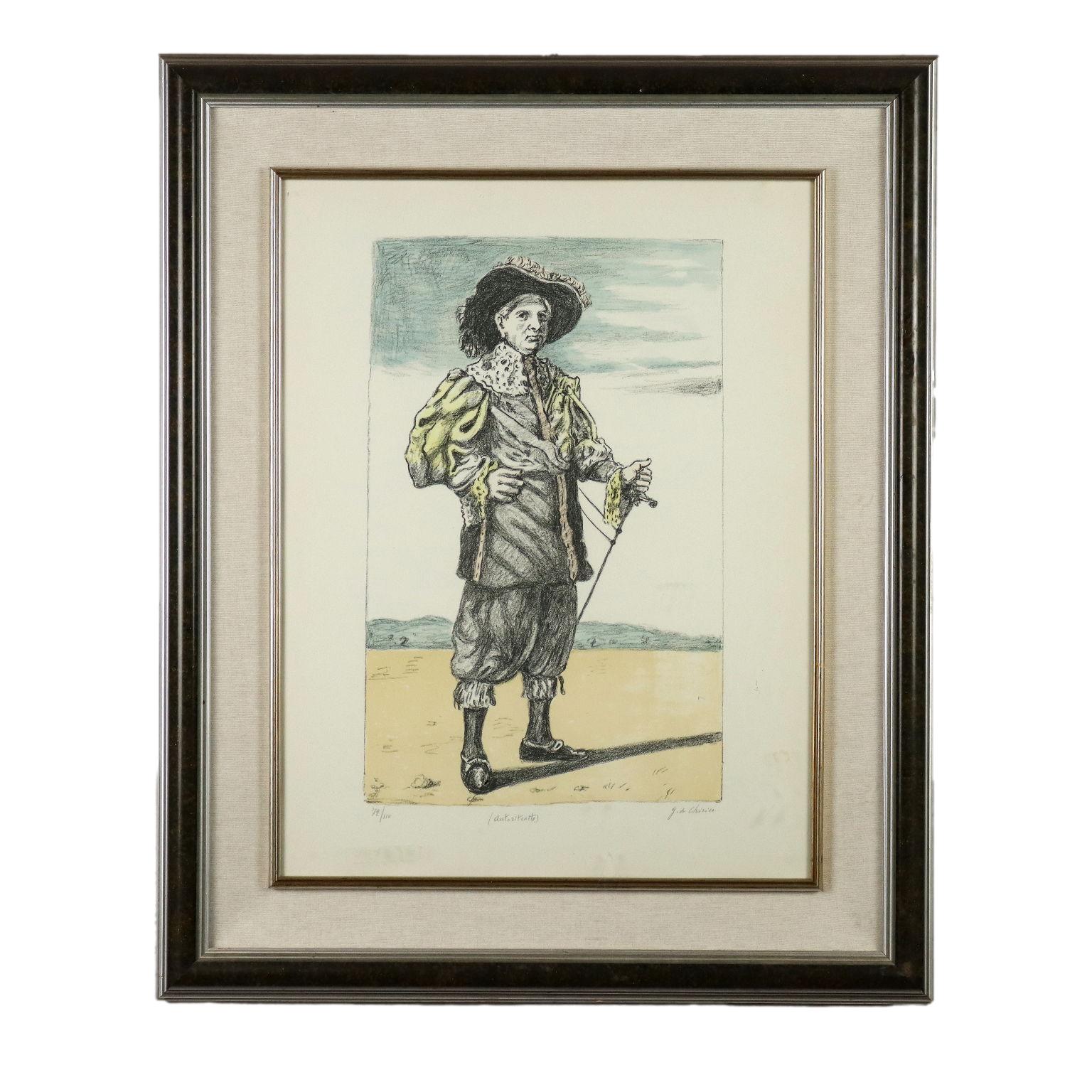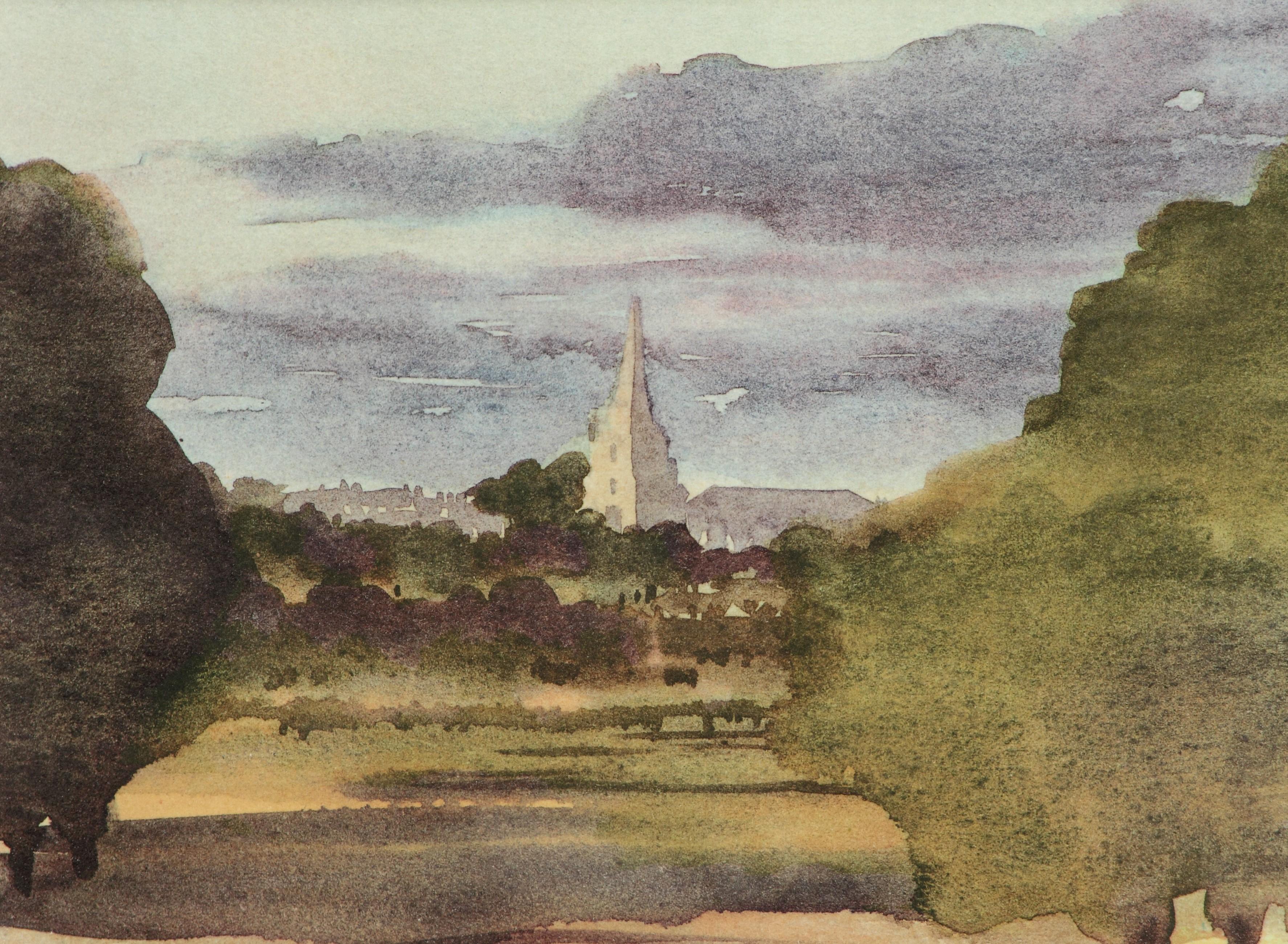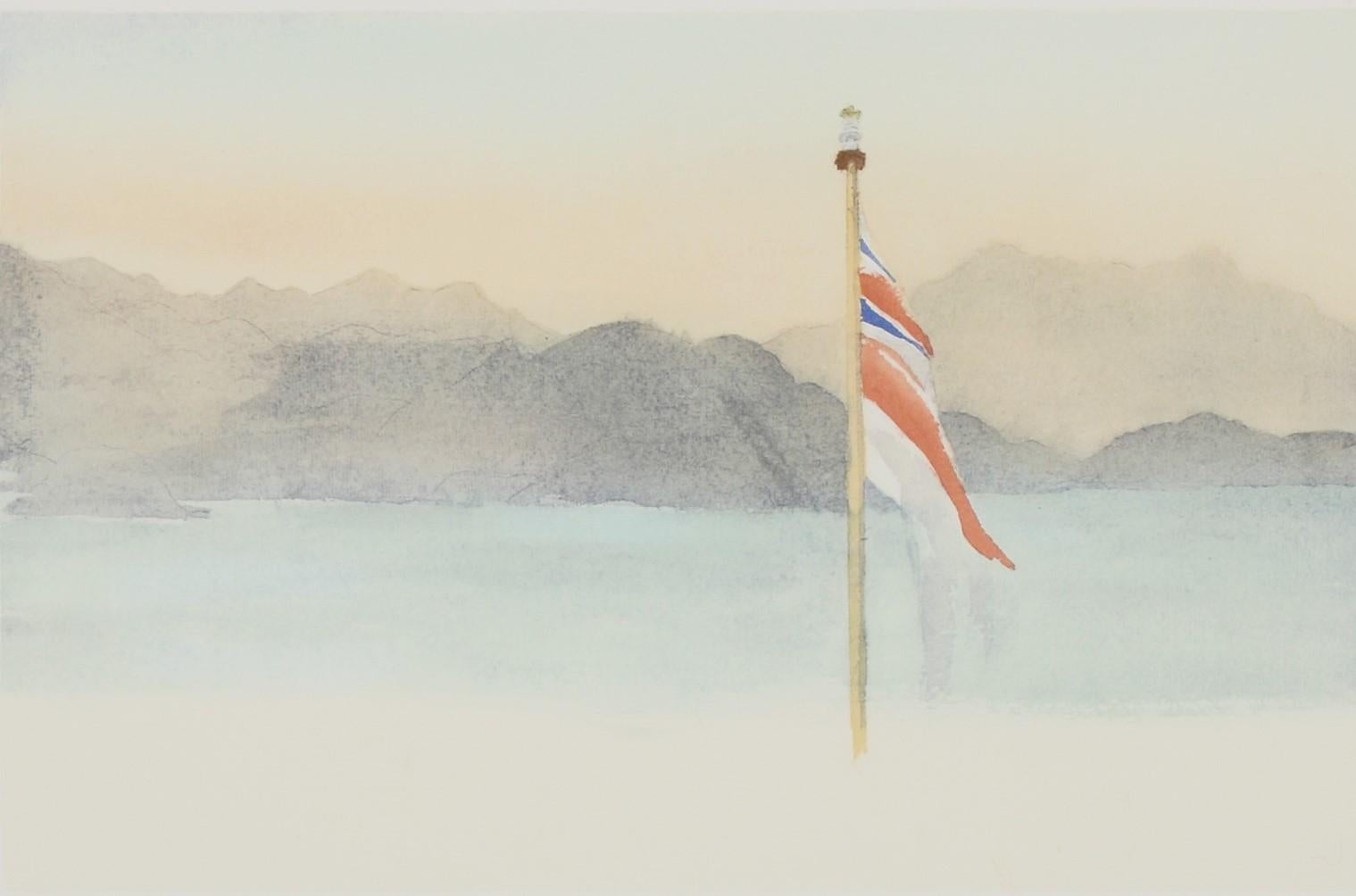Items Similar to Pennant's Marlon or Fischer
Want more images or videos?
Request additional images or videos from the seller
1 of 8
John James AudubonPennant's Marlon or Fischer1849
1849
About the Item
JOHN JAMES AUDUBON
John Bachman
The Viviparous Quadrupeds of North America
Published by V.G. Audubon
Lithograph with Original Hand-Coloring
New York 1849, 1851, 1854, 1870. Royal Octavo Edition
The Viviparous Quadrupeds of North America is the most outstanding work on American animals produced in the 19th Century. Audubon started to gather material for this second great undertaking in the 1830s, as Robert Havell was finishing the last plates for the Birds of America. John Bachman, a Lutheran minister, who had been the artist’s closest friend and supporter for many years, wrote all of the scientific descriptions and acted as a scientific editor for the work. Audubon’s two sons, John Wodehouse and Victor, also took critical roles. They contributed a great deal to the Birds of America, because of their father’s failing health and eyesight. Their help was even more important to the Quadrupeds. John Woodhouse, using a style modeled on his father’s, was primarily responsible for the plates produced after 1846. The small quadrupeds were published in octavo form just as the birds, but for the first time, the name of Audubon's son, John Woodhouse Audubon, appeared on the plates. J.T. Bowen was the lithographer. A number of artists, chiefly William E. Hitchcock and R. Trembly, transferred the images to the stones, signing their names on the plates. The Quadrupeds, as Audubon envisioned the book, would complete his record of the animal life of North America. Father and sons started their travels in Eastern woodlands and went through Missouri to the Rock Mountains. They also collected specimens along the Mississippi as well as in the coastal regions in Florida and the East Coast.
About 2000 copies of the first edition were sold. Other editions followed, the last in 1870. These 3-volume sets, as with the seven volumes of birds, were used as gifts to foreign governments by the U.S. government. The plates measure about 7x10 inches and are stone lithographs colored by hand. Audubon died in 1851, before this work was completed. The Quadrupeds have never received the widespread public acclaim which had greeted and sustained his Birds. Recently however, both collectors and scholars have re-evaluated “Audubon’s other book” as an unequaled record of American wildlife.
Reference: The Art of Audubon. Peterson. NY, 1979.
The Imperial Collection of Audubon Animals. Osborne. NY, 1967.
- Creator:John James Audubon (1785-1851, American, French)
- Creation Year:1849
- Dimensions:Height: 16 in (40.64 cm)Width: 12.5 in (31.75 cm)
- Medium:
- Movement & Style:
- Period:
- Condition:Clean, crisp image. Framed to museum specifications using archival materials. Glazed with ultra-violet filtering Plexiglas.
- Gallery Location:Florham Park, NJ
- Reference Number:
John James Audubon
John James Audubon (April 26, 1785, Les Cayes, Saint-Domingue (later Haiti) – January 27, 1851 (aged 65) Manhattan, New York, U.S.), born Jean-Jacques Audubon, was an American ornithologist, naturalist, and painter. He was notable for his expansive studies to document all types of American birds and for his detailed illustrations that depicted the birds in their natural habitats. His major work, a color-plate book entitled The Birds of America (1827–1839), is considered one of the finest ornithological works ever completed. Audubon identified 25 new species.
About the Seller
5.0
Vetted Seller
These experienced sellers undergo a comprehensive evaluation by our team of in-house experts.
1stDibs seller since 2014
161 sales on 1stDibs
Typical response time: 2 hours
- ShippingRetrieving quote...Ships From: Florham Park, NJ
- Return PolicyA return for this item may be initiated within 1 day of delivery.
More From This SellerView All
- Red-headed DuckBy John James AudubonLocated in Florham Park, NJJOHN JAMES AUDUBON. BIRDS OF AMERICA from Drawings Made in the United States and Their Territories. Lithographed, colored, and printed by J. T. Bowen. Philadelphia. Published b...Category
Mid-19th Century Academic Prints and Multiples
MaterialsLithograph, Handmade Paper, Archival Tape, Archival Paper
- Bernicla rufficollis... (Red Breasted Goose)By John GouldLocated in Florham Park, NJJOHN GOULD (1804-1881) Birds of Great Britain Drawn and lithographed by John Gould, Elizabeth Gould, H.C. Richter, W. Hart, Dr. Sharpe, and...Category
Mid-19th Century Academic Prints and Multiples
MaterialsLithograph
- CollieBy Diana ThorneLocated in Florham Park, NJDiana Thorne’s Dogs: An Album of Drawings. Diana Thorne. Julian Messner, Inc. New York, 1944. 24 Drawings in Lithography. “In drawing them,” she writes, “I have tried to ma...Category
1920s Academic Prints and Multiples
MaterialsLithograph
- Acanthus (Architecture)By Walter GropiusLocated in Florham Park, NJARCHIV FUR ORNAMENTALE KUNST. M. Gropius, L. Lohde, P. Lehfeldt. Lithographs with Later Hand-Color. Berlin, 1870. 13” x 19” Unframed. A fine German work, the illustrations are of cla...Category
1870s Academic Prints and Multiples
MaterialsLithograph
- Black-Faced Heath BreedBy David LowLocated in Florham Park, NJDavid Low (1786-1859) The Breeds of the Domestic Animals of the British Isles William Nicholson, RSA, Illustrator Brown, Green, & Longman’s, Publisher London, 1842 Lithographs with Original Hand-Color Page Size, 12.5 x 17 “Professor Low...Category
Mid-19th Century Academic Prints and Multiples
MaterialsLithograph
- Initial Letters "I" (Alphabet)By Owen JonesLocated in Florham Park, NJONE THOUSAND AND ONE INITIAL LETTERS Owen Jones (1806-1889) Day & Sons London, 1864 Chromolithographs One Thousand and One Initial Letters playfully describes an artistic e...Category
Mid-19th Century Academic Prints and Multiples
MaterialsLithograph
You May Also Like
- The CatacombsLocated in Sydney, NSW19th Century chromolithograph, 1822 Paris CatacombsCategory
19th Century Academic Animal Prints
MaterialsLithograph
- Balmoral - Signed Lithograph, Royal Art, Royal Homes, Balmoral Castle, BritishBy Charles (Prince of Wales)Located in Knowle Lane, CranleighBalmoral by His Majesty King Charles III (formerly known as HRH Prince Charles, The Prince of Wales) - Hand Signed Limited Edition Lithograph. Belgravia Gallery has been honoured to be associated with the artworks of HRH The Prince of Wales for over 25 years. Anna Hunter, gallery owner, wrote a handwritten letter to the Prince asking him if he would consider making signed lithographs from his beautiful watercolours which could be sold in aid of his charities. The gallery subsequently worked with the Prince for over 10 years publishing some 18 different editions and raising over £4million for the Prince’s Charitable Foundation. Lithographs were made from the Prince’s original watercolours under the guidance of Stanley Jones – a celebrated printmaker who had previously worked with Henry Moore for 30 years, and with Elizabeth Frink, David Hockney and others. Each one is hand-signed. “…One thing I have discovered in the course of my painting efforts is that Balmoral Castle...Category
1990s Academic Landscape Prints
MaterialsLithograph
- After the Bath (Edition 19/250)By Jan De RuthLocated in New York, NYJan De Ruth (American/ Czech, 1922-1991), " After the Bath" Edition 19/250, Figurative Lithograph on Paper signed and titled in Pencil, 30 x 21 (Image: 25 x 15.50), ca. 1970s, Late 20th Century Colors: Blue, Yellow, Red, Grey, White, Purple Jan De Ruth enjoyed special popularity as a portrait artist and has become one of the best known painters of the nude female in the world today. It's a long way from sketching in leftover coffee to painting a portrait of Ethel Kennedy for the cover of Time Magazine, twenty-five years in fact; and during that period, Jan De Ruth's personal experiences have been enough to fill two ordinary lifetimes. Through them all, art has sustained him and been his primary interest. To begin with, De Ruth, a native of Czechoslovakia and now an American citizen, spent the years of World War II being shunted through 5 different concentration camps, including the infamous Auschwitz. He made four escape attempts and finally made good on his fifth try. De Ruth constantly sought materials with which to draw, but "The only things we had were the few pieces of cloth we wore," he recalls. By chance, he was transferred to Germany as part of a labor detail and managed to sneak a pencil away from the camp supervisor-"I became a perfect thief during those years," he says. Jan drew a mother and child on a scrap of paper he scrounged from the factory where he worked, filled it in with shadings of coffee in various strengths-his finger was his brush. He exchanged the sketch for a piece of bread from a camp guard, and in effect, sold his first painting. In March of 1945, after being transferred to his native Czechoslovakia, he made his successful escape "knowing every step of the way." After the war, De Ruth became the commissar in a small Czech town and remained in the post for one year, just long enough to forge some documents that allowed him to flee to England. He took up residence in London and enrolled at the Ruskin Art School in Oxford University. He arrived in the USA in 1948. There are times in the life of a painter when his dedication to his art is overshadowed by the immediate requirements of self-preservation. This was one of those times! From '48 to 1955 he supported himself by working at night, earning his way painting designs on neckties and bathroom cups; as a fashion designer, illustrator, vacuum cleaner salesman, theatre manager, and actor. In '55 Jan De Ruth made his professional debut as a full-time artist and two years later his first one-man show established him as a serious painter. His work has been acclaimed for combining the technique of the old masters with a modern manner, and has been exhibited in more than 40 one-man shows in galleries and museums across the United States. He has been judged positively by juries in 28 national exhibitions and his numerous awards include the Purchase Prize of the Butler Institute of American Art, and the Gold Medal of the National Arts Club. De Ruth, author of the books "Portrait Painting" and "Painting the Nude," has devoted his entire life to painting the female face and form. He enjoys special popularity as a portraitist and has become one of the best known painters of the nude female in the world today. Often asked why he concentrates on this most demanding of all art subjects he replies: . . . "Each painting of the nude becomes a new experience . . . It (the human figure) is nature's most perfect and most imperfect creation, communicating, even in silence and immobility, the physical and spiritual power-and frailty-of humanity." Articulate, sophisticated, outspoken and well informed, De Ruth has also been a welcome guest on radio and television shows. But, it is painting that gives a purpose to Jan De Ruth's existence: "It is an unending challenge-there is no end, no final result-to be found in painting the human body. I have never seen two gestures that are alike, but so are the possibilities of expression. There will always be painters who will find one more way of saying: "See! This is what I feel about humans." . . . So until a greater challenge and a more profound symbol comes along, it is the human figure I wish to paint." AWARDS Butler Institute of American Art Purchase Prize Oguniquit Art Center Knickerbocker Artist 1964 Audubon Artist, Grumbacher Purchase Prize National Arts Club of America Gold Medal Windsor-Newton Award of the National Arts Club ONE MAN MUSEUM EXHIBITIONS B'nai B'rith Museum - Washington D.C. Florida Gulf Coast Art...Category
1970s Academic Abstract Prints
MaterialsLithograph
- Food and the War! Original c. 1918 World War 1 vintage posterLocated in Spokane, WAOriginal poster: Food and the War! American wheat to win! Rare and very seldom seen original World War 1 authentic vintage poster. Archi...Category
1910s Academic More Prints
MaterialsLithograph
- Three Gould Hand-colored Lithographs from Birds of Australia and New ZealandBy John GouldLocated in Alamo, CAThree hand-colored lithographs from John Gould's seven volume book "The Birds of Australia", which included New Zealand, depicting: pairs of "Eudyptes Chrysocome" (New Zealand Rock-hopper Crested Penguins), "Diomedea O Thalassarche Cauta" (Australian Shy Albatross) and "Sula Fusca" (Brown Gannets). These beautiful sea bird prints are presented in identical very attractive brown wood frames, embellished with gold highlights in the corners and gold inner trim, along with light cream-colored French mats, each with a medium cream-colored band and a gold highlight line. There is scattered spotting. There is a small tear in the lower right corner of the penguin lithograph...Category
1840s Academic Animal Prints
MaterialsLithograph
- "Yellow Thunder" Chippewa Chief Lithograph Portrait by McKenney & HallBy McKenney & HallLocated in Hallowell, ME“O-hya-wa-mince-kee. A Chippewa Chief.” [Yellow Thunder.] From McKenney & Hall’s History of the Indian Tribes of North America. Philadelphia: Rice & Clark, 1843. Folio: image ca. 15 x 12. Lithograph. Original hand color. Very good condition. The McKenney & Hall lithographs of Native Americans The McKenney & Hall prints of Native Americans, from their History of the Indian Tribes of North America (1837-1844), document an important part of American history, illustrating the great leaders of the Indian nations which have disappeared since the mid-nineteenth century. Thomas McKenney, head of the United States Bureau of Indian Affairs for many years, was a champion of the Indian and fought throughout his tenure to preserve something of their culture, so integral a part of the history of the United States. His legacy was a gallery of portraits of the great chiefs by artists such as James Otto Lewis, Charles Bird King and George Cooke...Category
1830s Academic Portrait Prints
MaterialsLithograph






